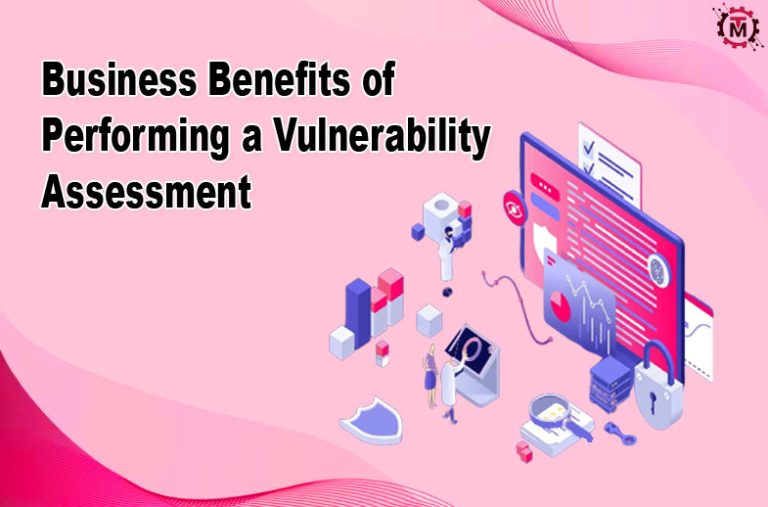Organizations must prioritize proactive measures to identify and address vulnerabilities in their systems and networks to safeguard their assets and reputation. One such crucial step is performing a vulnerability assessment. A vulnerability assessment is a process of quantifying and identifying vulnerabilities in company assets across network infrastructures, applications and computing systems. It is a fundamental part of a company’s security plan that a trusted IT partner or in-house can conduct. Regular vulnerability assessments are critical for good IT hygiene.
This blog article will share some business benefits of conducting vulnerability assessments, exploring how they contribute to a company’s overall success.
What is a Vulnerability Assessment?
Vulnerability assessment supports identifying, classifying, and prioritizing vulnerabilities in applications, network infrastructure and computer systems. This represents a security weakness that exposes organizations to potential cyber risks or threats. Organizations often conduct vulnerability assessments to address and identify such vulnerabilities using automated testing tools like network security scanners. The results are then summarized in a vulnerability assessment report. Regular vulnerability assessments can prove highly beneficial for organizations dealing with persistent cyber-attacks. It is because threat actors constantly look for weaknesses they can exploit to breach entire networks, applications and even systems.
Steps of Vulnerability Assessment:
Establish a Plan
The initial phase of a vulnerability assessment involves defining the objectives and scope of the testing method. This step allows the tester to establish the rules of engagement for the assessment. All pertinent information and required resources available to the tester during the planning stage are identified.
Gather Information
After formulating a comprehensive and clear plan, the subsequent step in vulnerability testing entails gathering relevant information about a specific mobile or web application and its underlying infrastructure. This information may encompass details about the application’s business logic, privilege requirements, and any other data that proves valuable for the actual testing phase.
Identify Vulnerabilities
When you have collected the member’s information, you can identify and find the weakness in your system. However, you can do this through tools to automate the process or manually. If you find any issues in your system, you can do generation testing alongside vulnerability testing.
Compile a Report
Arguably the most critical stage of vulnerability testing is the preparation of a detailed and comprehensive report. Without this step, all the effort put into the assessment would be rendered futile. The report must thoroughly outline the weaknesses found in your IT infrastructure and provide actionable solutions to address them, effectively mitigating potential risks. With this information, your cybersecurity personnel can take necessary measures to enhance your organization’s infrastructure and bolster its security.
Advantages of Performing a Vulnerability Assessment
It’s more important than ever for businesses to confirm the security of their systems and networks with the increasing number of data breaches and cyber threats. Businesses can address and identify potential security risks by conducting regular assessments before they become a problem. Below are the particular business advantages of performing a Vulnerability assessment:

Improved Business Agility
Vulnerability assessments offer valuable insights into a business’s IT infrastructure, helping identify potential weaknesses and bottlenecks. Targeted improvements resulting from these assessments lead to increased efficiency, performance and speed. Addressing troubles like underutilized sources, old software program and slow community connections streamlines operations that decorate business agility. This stepped forward agility boosts productivity, purchaser pleasure, and the corporation’s aggressive edge with the aid of enabling the speedy adoption of recent technology and methods to reply to marketplace needs.
Better Resources Allocation
Vulnerability assessments provide critical insights into a business’s IT resource utilization. Companies can make informed decisions on resource allocation by identifying overutilized, redundant or underutilized assets. Optimizing resource allocation enhances productivity and efficiency, which allows businesses to reallocate resources to more important areas. This proactive approach helps SMBs save money by avoiding unnecessary hardware or software purchases. These vulnerability assessments aid SMBs in effectively allocating resources, leading to a more efficient and productive operation.
Increased Employee Productivity
Vulnerability assessments enhance employee productivity by identifying and resolving issues and technology hindrances that impede their work. Updating software and improving network speeds enables employees to work more efficiently. Enhanced IT security provides employees with peace of mind about their business and personal data. Increased productivity leads to higher revenue as tasks are completed more efficiently. Moreover, improved workplace resources and tools can reduce employee turnover, fostering loyalty to the company.
Enhanced Reputation and Brand Image
A company’s success hinges on its reputation and brand image. Vulnerability assessments a critical role in improving each by way of showcasing the business enterprise’s commitment to privateness and safety and incomes trust from customers and stakeholders. Research indicates that 81% of customers could disengage with a logo online after a facts breach. By identifying and addressing vulnerabilities, businesses can save you breaches and protect sensitive statistics, in the end constructing client agree with and loyalty. A bolstered reputation and brand image lead to increased revenue, as customers prefer to do business with secure and trustworthy companies.
Staying Compliant With the Regulations
Compliance with industry regulations is essential for corporations, no matter their length. Failure to comply can cause hefty fines and damage to recognition and brand image. Regulations like PCI DSS and HIPAA ensure information protection and device safety. For instance, a company processing credit card transactions can use regular assessments to identify and fix vulnerabilities, staying compliant with PCI DSS and avoiding penalties.
To Sum UP
Vulnerability assessments play a vital role in any corporation’s protection strategy, supplying a huge variety of blessings to companies of all sizes. From improving enterprise agility and aid allocation to boosting employee productivity and keeping compliance with guidelines and requirements, vulnerability exams are instrumental in safeguarding treasured assets and improving ordinary protection posture. By identifying and resolving vulnerabilities, companies can significantly decrease the cyber-attack hazard and make certain adherence to enterprise policies and standards.







